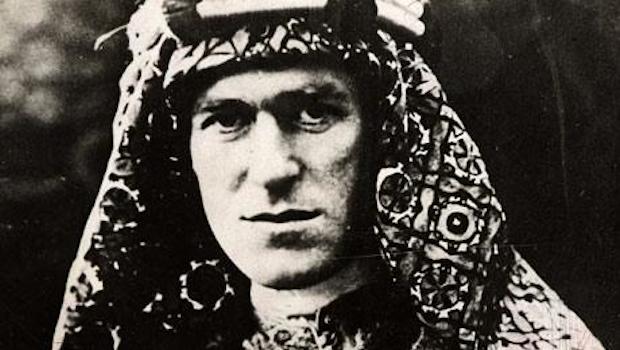A map, hand-drawn by T.E. Lawrence—aka “Lawrence of Arabia”—will be auctioned at Sotheby’s in early November. The map, which was drawn shortly after the end of the First World War, was based on the legendary British military intelligence officer’s notes of his famous five-day journey in May 1917 through the Al-Nafud desert in the northern Arabian Peninsula to the Red Sea port of Aqaba at the height of the Arab Revolt against Ottoman rule.
Sotheby’s Head of Books and Manuscripts, Richard Fattorini, told Asharq Al-Awsat that the map had a special significance “because it is hand-drawn by Lawrence himself and there are notes he wrote on the right-hand margin to prove that.”
The notes are indeed visible through the glass case it is stored in, next to Lawrence’s painstakingly drawn illustration of the terrain he encountered on his journey: “This is the only drawn copy so please do not lose it prematurely,” he has written.
Fattorini said there was no question as to the map’s authenticity. “It is common knowledge that Lawrence used to have on him a notebook to note down his observations, and he used to draw small maps and write notes about people he met on his travels and describe the terrain and the important places around him,” he told Asharq Al-Awsat. “We know this because the British Library keeps all Lawrence’s notebooks,” he added.
On why Lawrence drew this map, Fattorini said: “We also know that Douglas Carruthers—a map compiler who at the time worked on a British government project to improve the maps of the Arabian Peninsula—realized that Lawrence had new information and details that were not included in the maps of the British Foreign Office, so he asked Lawrence to send him a map that showed the details of his trip to Aqaba, especially as there were no detailed maps available of that region at the time.”
Today, the sale of the map seems somehow appropriate. As the Islamic State of Iraq and Syria seeks to re-draw the map of the Middle East, Lawrence’s map is a tangible reminder of the forces that brought the region’s current borders into being.
Fattorini agrees: “The map holds special significance these days, and it is the only map drawn by [Lawrence’s] hand which is offered for sale at a public auction.”
Though Sotheby’s says it expects the map to sell for anything between 70,000 and 100,000 pounds sterling (114,000 and 162,000 US dollars), Fattorini admitted that its value was difficult to gauge.
“It is a difficult one, because we have never auctioned a similar document before,” he said. “We previously sold a copy of [Lawrence’s] book The Seven Pillars of Wisdom and copies of his letters—and at this auction we are offering a number of his possessions, including the first edition of his famous book—but never a map drawn by his hand.”

